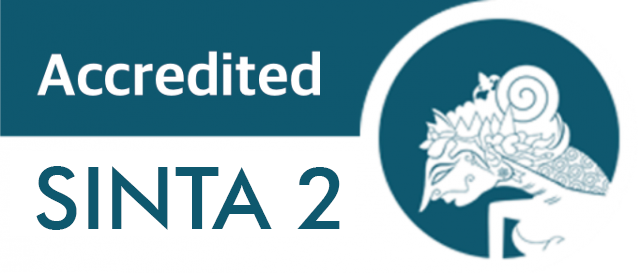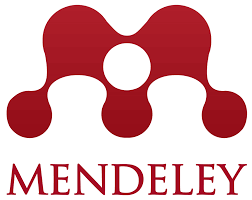The Effect of Creative Teaching Technique to Creative Problem-Solving Ability in Students
DOI:
https://doi.org/10.15408/tjems.v4i1.5907Keywords:
teaching creative, creative problem solving, pengajaran kreatif, pemecahan masalah kratifAbstract
Abstract
The focus of this study is increasing creative problem-solving study through creativity training programs for teacher trainee Tarbiya and Teaching Science. Results of previews research in relation to structured programs for fostering creative thinking and problem-solving abilities include the Productive Thinking Program (Covington, Crutchfield, Davies, & Olton, 1972, the Purdue Thinking Skill Program (de Bono, 1973, 1976, 1983). These studies investigated differences in student primary, elementary and high school creative thinking while this study investigates the creative teaching problem-solving in adult learner the PGMI (Teaching Trainee for Elementary), The experiment was conducted in firsts semester of the school year 2015/2016 0f 2 September, 25 –December 2015. ( The main objective of this study to answer the question whether teaching creative increase the ability of the trainer teacher to respond to the varied challenges on their elementary student in a creative manner. The creative training program consisted of class discussion and also active stimulation creative problem-solving. The Participant of this research is PGMI students age 19-20. Classes manipulate by teaching creative or student discussion. The result showed that experimental class increases creative problem solving then discussion class. The recommendation for teacher use teaching creative in the class room.
Abstrak
Fokus pada penelitian ini adalah pembelajaran untuk meningkatkan pemecahan masalah secara kreatif melalui program pelatihan kreativitas untuk bidang ilmu Tarbiyah dan Keguruan. Hasil penelitian pratinjau dalam kaitannya dengan program yang terstruktur untuk meningkatkan pemikiran kreatif dan kemampuan memecahkan masalah, diantaranya yaitu Program Berpikir Produktif (Covington, Crutchfield, Davies, & Olton, 1972, Program Keterampilan Berpikir Purdue (deBono, 1973, 1976, 1983). Penelitian tersebut telah menginvestigasi perbedaan pemikiran kreatif pada siswa SD, SMP dan SMA sedangkan penelitian ini menyelidiki pengajaran pemecahan masalah pengajaran kreatif pada pelajar dewasa yaitu untuk PGMI (Pendidikan Guru Madrasah Ibtidaiyah). Percobaan ini dilakukan pada semester pertama tahun ajaran 2015/2016, 2 September- 25 Desember 2015. Tujuan utama penelitian ini yaitu untuk menjawab pertanyaan apakah pengajaran kreatif dapat meningkatkan kemampuan guru pelatih untuk merespon terhadap tantangan yang variatif pada siswa SD mereka secara kreatif. Program pelatihan kreatif terdiri dari diskusi kelas dan juga stimulasi aktif yang kreatif dalam pemecahan masalah. Peserta penelitian ini adalah siswa PGMI usia 19-20 tahun. Kelas dimanipulasi dengan pengajaran kreatif atau diskusi siswa. Hasilnya menunjukkan bahwa ada peningkatan pada kelas eksperimen dalam pemecahan masalah secara kreatif dibanding kelas diskusi.Direkomendasikan agar guru menggunakan pengajaran kreatif di ruang kelas.
How to Cite : Nuraida. (2017). The Effect of Creative Teaching Technique to Creative Problem-Solving Ability in Students. TARBIYA: Journal of Education in Muslim Society, 4(1), 53-62. doi:10.15408/tjems.v4i1.5907.
Permalink/DOI: http://dx.doi.org/10.15408/tjems.v4i1.5907
References
Conny Semiawan (1990). Memupuk Bakat dan Kreativitas Siswa Sekolah menengah. Jakarta : PT Gramedia.
Donald J. Treffinger (2004). Creativity and Giftedness. Thousand Oaks, California: Corwin Press Sage Publication Company
Joshua Fair Child,(2013), Effects of instuition, positive Affect, and Training on Creative problem solving, in Encyclopedia of creativity, invention, innovation and interprenership pp 562-567
Khatena Joe (1982), Educational Psychological of Gifted, New York John Willey and sons.
Moshe F. Rubinstein (1975). Patterns of Problem Solving. America : Prentice-Hall, New Jersey
R.L Firestien, 1987. Effect of Creative Problem Solving Training on Communication, on prosiding Creativity and Innovation 1987
Teresa M. Amabile (1989), Growing up Creative Nurturing a Lifetime Of Creativity, Crown Publishers, Inc. New York.
Donald j.treffinger (1980). Encouraging Creative Learning for the Gifted and Talented, Calofornia: ventura County Superintendent of Schools Office.
Krathwohl dkk. (1964). Taxonomy of Educational Objectives, Book II: Affective Domain. London: Longman Group.
Kuang-Chao Yu, at all 2013, Enhancing Student’s problem solving Skills through context based learning.
Torrance, E. P. (1984). Mentoring Relationships: How They Aid Creative Achievement, Endure, Change, and Die. Buffalo, NY: Bearly Limited.











